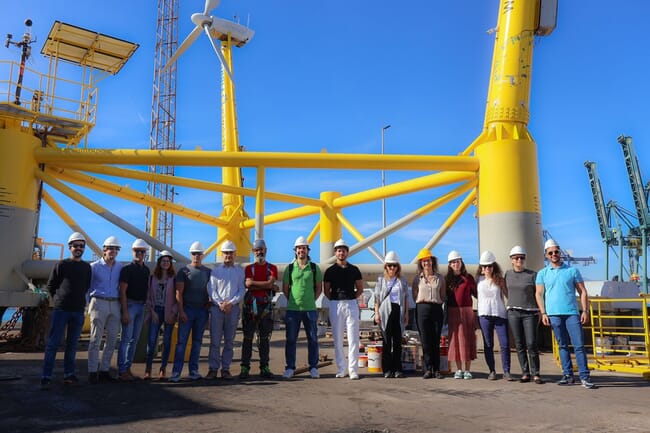
The design includes a custom-designed fish cage with innovative net materials and a high level of digitisation and is being developed by a multidisciplinary consortium including R&D centres, companies, SMEs and a regional authority.
The project is an 80 percent co-financed initiative with over €1 million from the European Climate, Infrastructure, and Environment Executive Agency, thanks to the European Maritime, Fisheries, and Aquaculture Fund, with the remaining 20 percent coming from the project partners' own funds.
"This is a good indicator of the effort being made in the Canary Islands through ACIISI to promote projects and activities of public-private collaboration and knowledge transfer in the regional R&D&I field," noted Javier Franco, director of the Canary Islands Agency of Research, Innovation and Information Society, who took part in the visit.
In the Canary Islands, the consortium has key entities such as PLOCAN, which, besides providing support from its Test Bench for validation tests, will lead the work in obtaining the necessary licences and permits for the new activity, as well as economic studies. The University of Las Palmas de Gran Canaria (ULPGC) is responsible for the aquaculture system through the ECO-Aqua Institute and will also be supported by Canexmar, a company dedicated to aquaculture production and commercialization. Additionally, the Canary Islands Maritime Cluster will promote the meeting and dialogue of all social agents related to the sea.
The visit was preceded by a technical conference held at the ACIISI headquarters on March 12, where the different project partners discussed the project's progress and milestones. These include progress led by PLOCAN on the regulations and permits necessary for implementing these activities in Canary Islands waters and more biotechnological aspects led by ULPGC and EnerOcean, addressing the engineering solutions enabling the integration of the two major infrastructures consisting of the aquaculture cage and the wind turbine, as well as associated sensor, monitoring, and digitalisation systems for the prototype. All this without neglecting the biological and environmental aspects of the action plan and monitoring that will be launched to assess environmental impact and any necessary mitigation.



